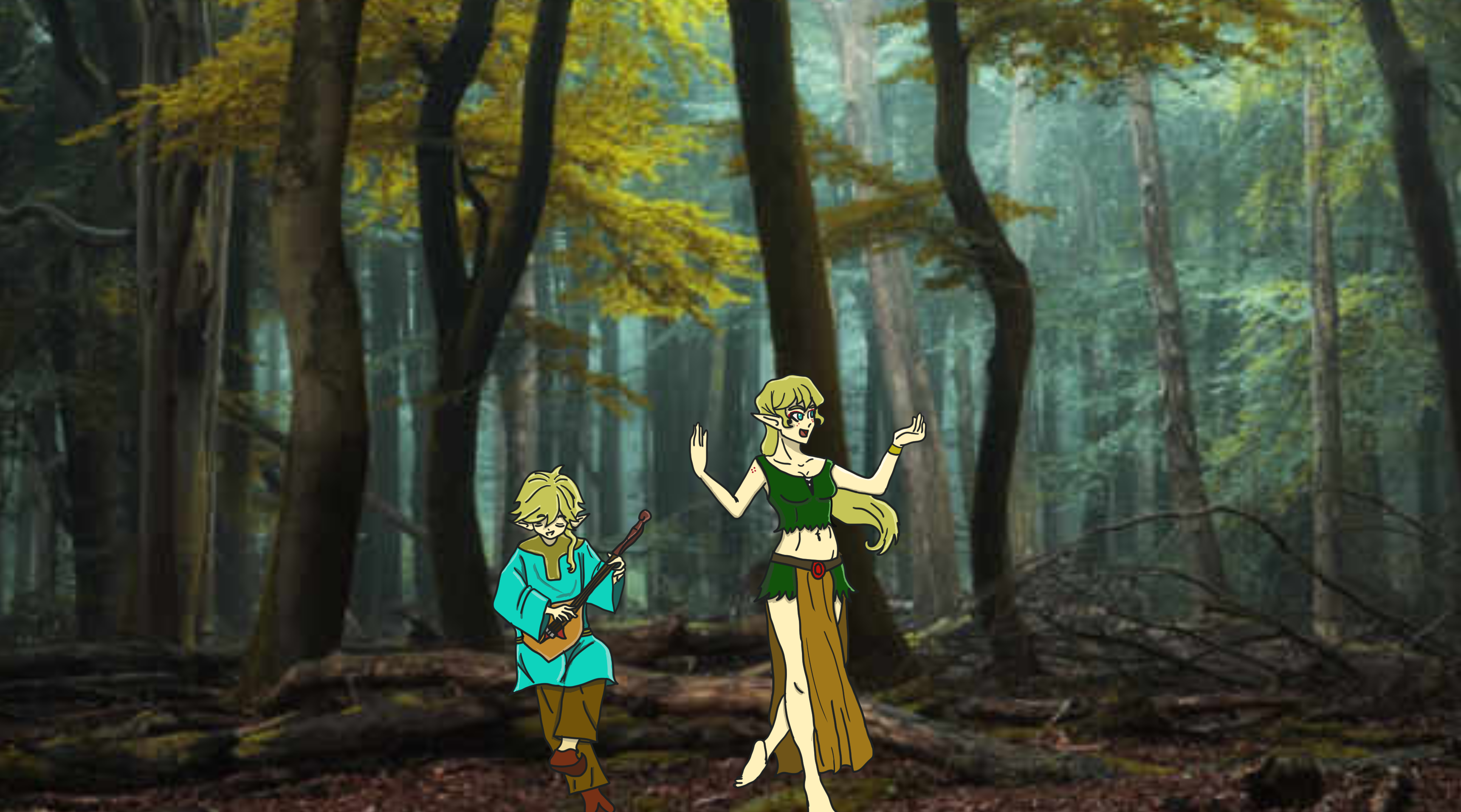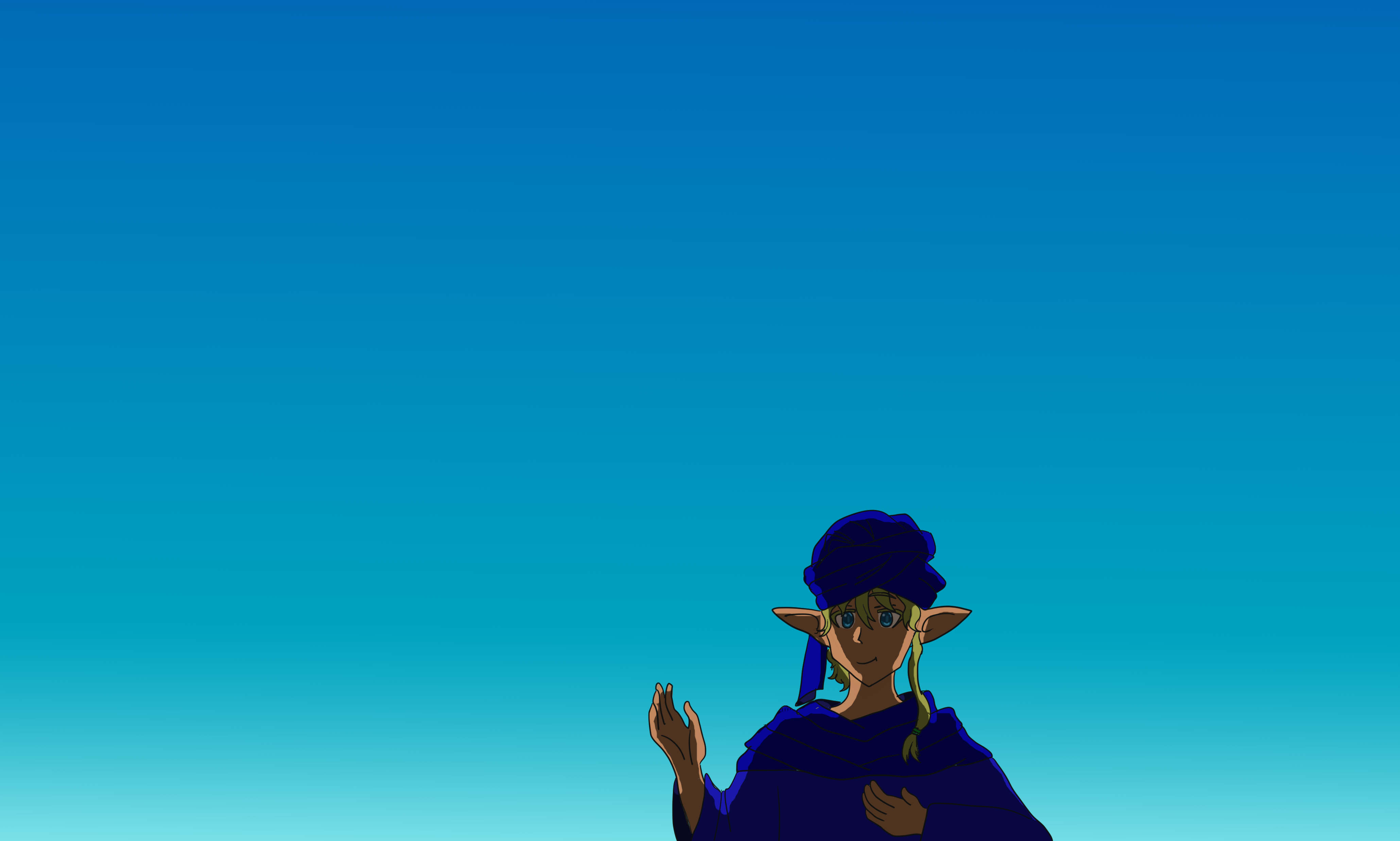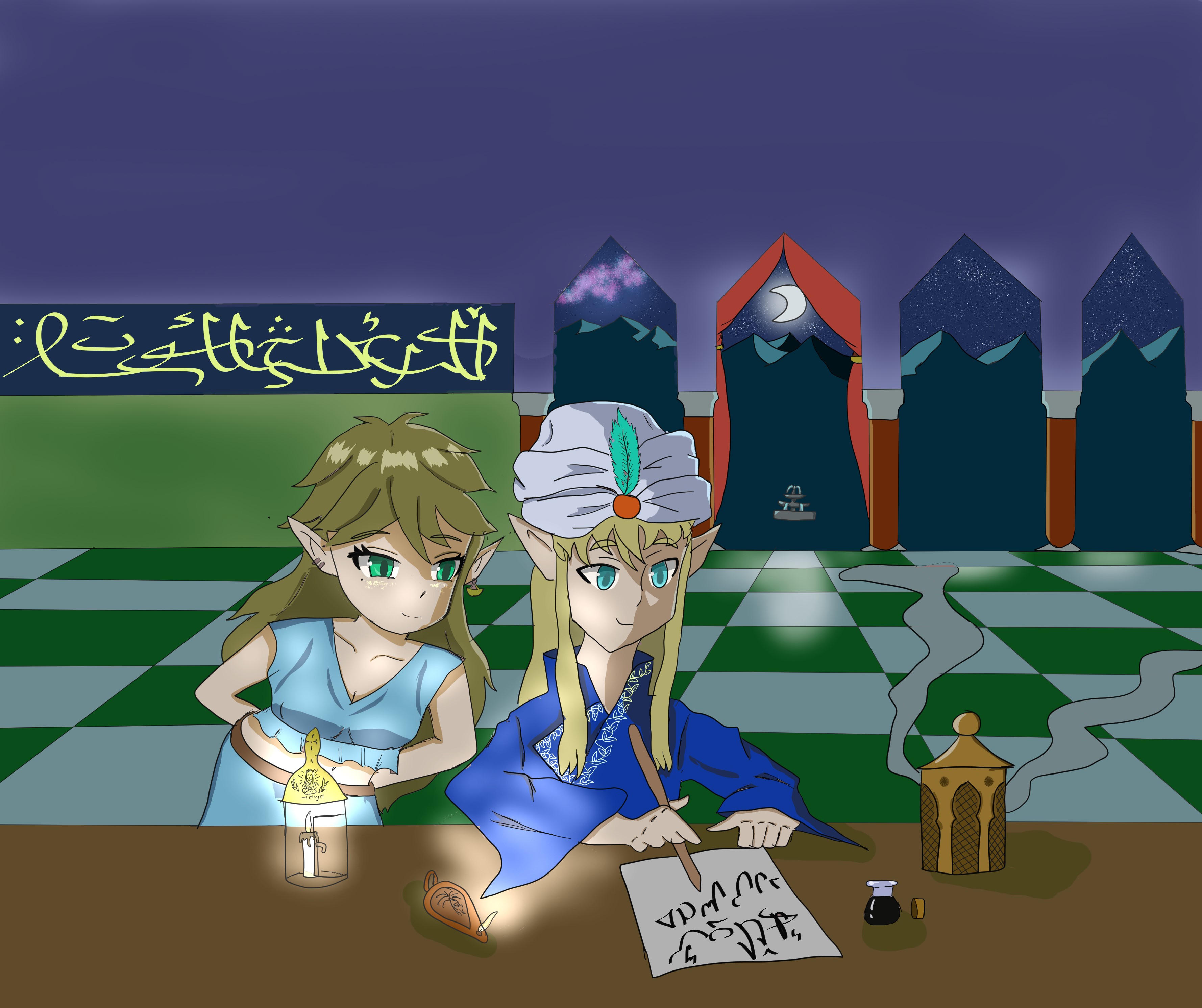Elves
Commonly known as the Anneriowynn in their language, (meaning "the people"), they are the other great race of Yeia. They were the first humanoids to appear in Yeia, and were the first to see the faces of the gods, to whom they have great respect and piety. They are the protectors of nature and the good and pure ways of magic. They see themselves as the wisests and most blessed of the sapient creatures of Yeia and few men can equal their wisdom, technology and magical powers.
Basic Information
Anatomy
Anatomically speaking the elves have the same basic traits as all humanoids, four limps and an elongated body that makes them taller that humans. They tend to be less muscular than humans, for example, but they are more agile.
Growth Rate & Stages
Elves usually live up to 500 years, so their growth rate is quite different from humans and another humanoid species. For example, 20 years old elves are the equivalent of a 5-6 years old human child. An elf in considered a teenager when he or she is 60 years old. From age 90 to 150 an elf enters is considered a youngster, not a fully grown adult, yet from age 90 onwards is when they become fertile. During this period elves resemble an 18-20 years old girl or boy. From age 150 to 400 an elf is considered a full growth adult at the height of their physicial and magic powers. And finally from age 400 to 500 an elf is considered an elderly person.
About the latter, it must be said that elder elves don't really look like old humans, they look like a human in their 50s, and thats the appearance they have until they died and go to the realm of the gods.
Ecology and Habitats
Elves, as humans, had shown an extraordinary capacity of adaptation. This has allowed them to live in many different places with very different climates. Most of them however, can be found living near or inside forests, for example most of the elves of Teria (aside from the Snow Elves)and also the elves from southern Seria live in that kind of places where they have built their splendorous cities.
The Sun Elves on the other hand have chosen the deserts of central Karia and the fertile margins of their rivers and lakes as their home.
The
Snow Elves have a very peculiar lifestyle and habitat. They spend half of the year (from Autumn to Spring) inside gigantic caves in the Albine Mountains where they have their own artificial light (that allows them not to be blind by the sun when they get out of them), climate, agriculture powered by magic etc... And during Spring and Summer they exit their caves and settle in the nearby valleys where they have their "Summer Cities" where they cultivate the lands and also take provisions from the winter and also trade with their friendly human neighbours to the South.
Behaviour
Elves are always very concerned about manners, elegancy and politeness. Hearing an elf swearing is very strange.
They look like something out of this world, something heavenly, from their gestures to their speech. An elf is always elegant both in their clothing and in their gestures. When they speak between them or with foreigners they always do slow and elegant gestures and they don't raise their voices, they just talk with a quite or tranquil voice. They like to show respect to visitors that come in peace and they expect their hospitality will, in turn, be reciprocal. Elves always look beyond what humans see, they think about solutions for problems faster than any human, something that they don't take pride of, since its in their nature. What they are really proud of is their magical powers, which are unnequal in the mortal world.
Additional Information
Social Structure
Elven society is organized around the family and the village. Elven families can be divided into multiple branches, each one with different surnames but with a common ancestor.
In terms of social structure in their homelands, Elven realms seem to have a similar organization, dating back to the Bronze Age. All elven kingdoms (at least the ones that have survived) are organized into monarchies, and all of them have a class system as follows:
- The Aristocracy (Any'anerion)
- Priesthood and Sorcerers (Ayryn)
- Warriors (Telithyn)
- Artisans and Merchants (Aesyn)
- Peasants (Theydyn or Theyndar)
Facial characteristics
Elves have, in words of their friendly human neighbours, very beautiful faces, with pointed noises and most of the times, with light coloured eyes. Their hairs are often blond, but elves with brown or dark hair are common too. Their skin, aside from the Batheryn tribe of the Sun Elves is most of the times pale, but the latter have darker skin tones in comparison with the rest of the elves.
Of course, the most distinctive feature of the elves are their pointy ears, which sometimes are decorated with earrings.
Geographic Origin and Distribution
Elves are present in both continents, Teria and Karia. They are more numerous in Teria where for a long time where the majority of the population in the southern regions of the continent.
Average Intelligence
Elves are very intelligent creatures. Most of the scientific and technological discoveries have been made by the elves. They are also cunning politicians and master strategists.
Perception and Sensory Capabilities
Elves have better hearing and sight than humans and other humanoid species. Their ears are also sensitive to the tiniest sound and also very sensitive to touching. Elves can see better and futher than humans something that makes them pretty deadly in warfare specially as archers.
As the first ones, they ones chosen by the gods to protect nature, they are the only ones that can use the most powerful forms of magic (aside than ones reserved to the gods themselves).
Civilization and Culture
Major Language Groups and Dialects
For many centuries
Classical Elvish was the language spoken by the majority of the elves, aside from the Dark Elves. Nowadays this classical elvish language has split into multiple dialects, some of them almost becoming separate languages: This dialects are silvan elvish, also called green elf dialect, spoken in the Kingdom of the Green Elves and also by the elves living in Brire and Stormitia where is the second official language, Snow Elvish, that is closely related to the silvan elf dialect, the Southern Dialect of the elves of Southern Seria, which is heavily influenced by the seris language and lastly, the last dialect descended from classical elvish is Sun elvish, spoken in the Kingdom of Unhelion by the Sun and Desert elves.
There is a tiny minority, however, in the regions around the Interior Sea, that now belong to the Kingdom of the Green Elves, that, because they were once part of the Ikarian Empire, speak Blatian as their first language.
In Brire and Stormitia, most elves are bilingual, speaking both their native elvish dialect and the oronai language.
Interspecies Relations and Assumptions
Elves at the time of the heroes were fierceful enemies of the dwarves (who took refuge inside the mountains never to be seen again in the surface). With humans relations are more cordial, depending on the ethnicity of their human neighbours. Traditionally Elves had very friendly relations with the Davidovian and Nari peoples. With the first, dispite some sporadic wars in the past, they have allowed interracial marriages and have had offspring with them.
This offspring, the commonly known half-elves are the only mixed descend that elves have produced. According to elven law, since ancient times, half-elves that live inside elvish territory are considered fellow elves and as such they must respect and follow elven law, and if they commit a crime, they should be punished according to that law.
This interspecies relation between humans and elves is well attested, being recorded in the oldest davidovian myths and sagas.
Origin/Ancestry
Humanoids
Lifespan
500 years
Average Physique
Elves are generally taller (between 1'70m- 1'90m high) and thiner than humans. They usually display long hair although depending on the region you can find elves with short hair, but this feature is usually related to kids more than adults.
Body Tint, Colouring and Marking
Body marking is a very old elven tradition. During the bronze age it is known that many elves had their bodies or faces with markings showing rank, afiliation (whether they were moon, forest, high elf etc...) and they're also protections against evil. Its true that after many centuries these traditions have been slowly disspearing, with most of the elves only painting their faces or bodies when they go to war, or during festivals. The only most notable exception are the silvan elves that live in Southern Teria who are always painted.
Related Ethnicities
Related Myths
A Sun elf noblemen writing a poem in his home, by Callyxtus
A Silvan elf couple celebrating the Festival of the Holy Tree





Comments